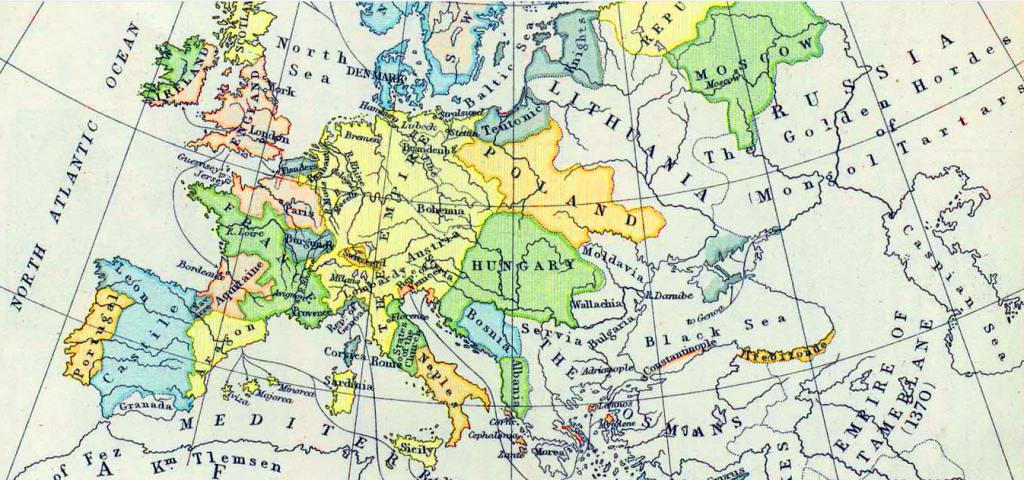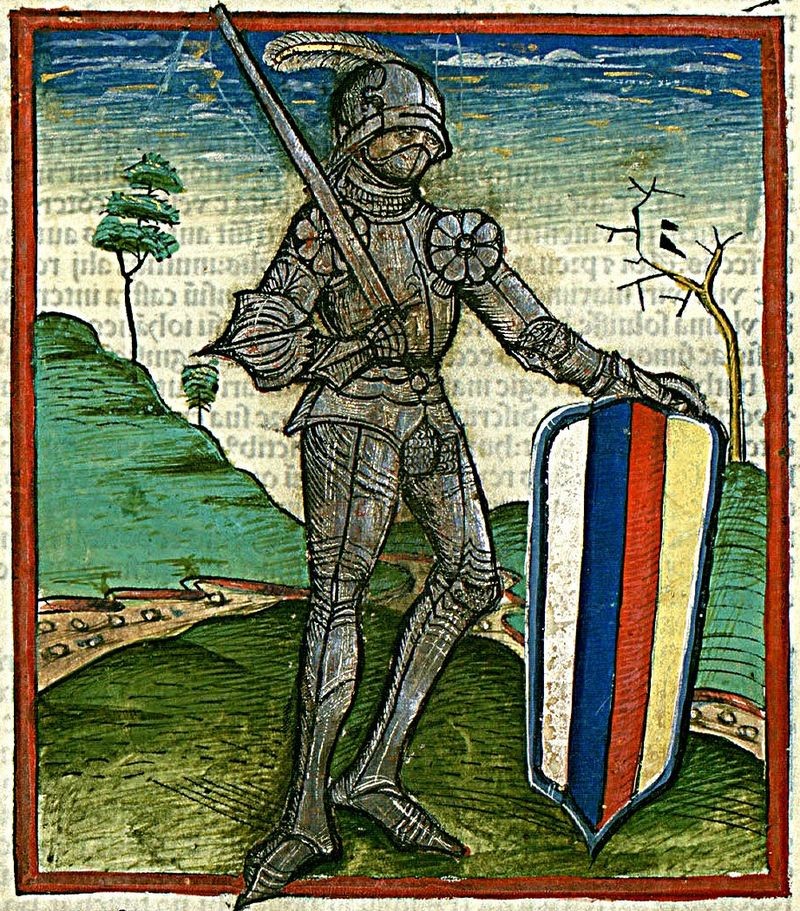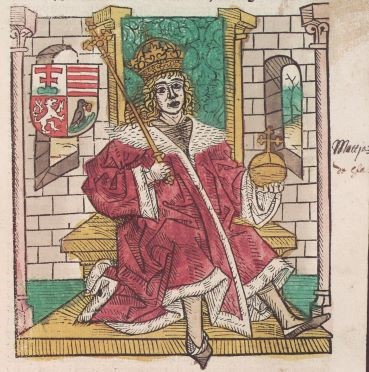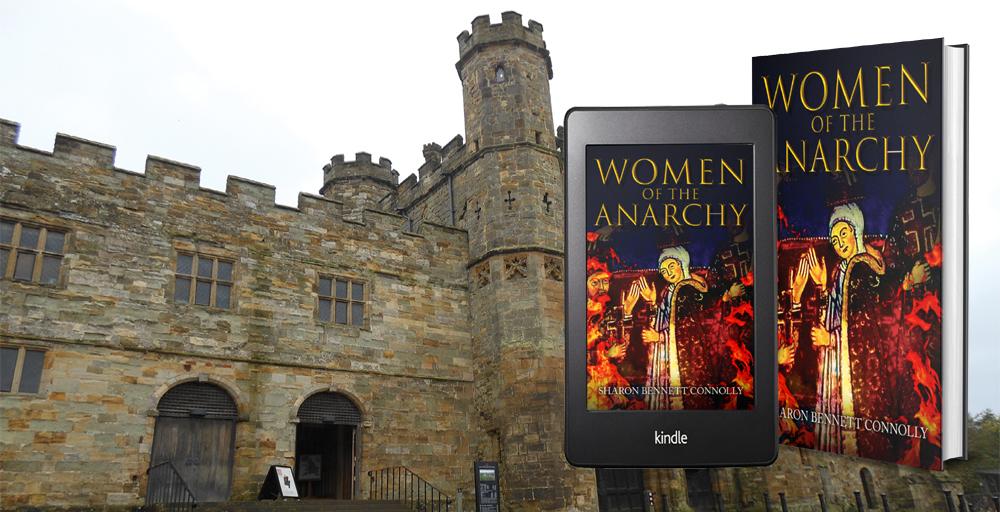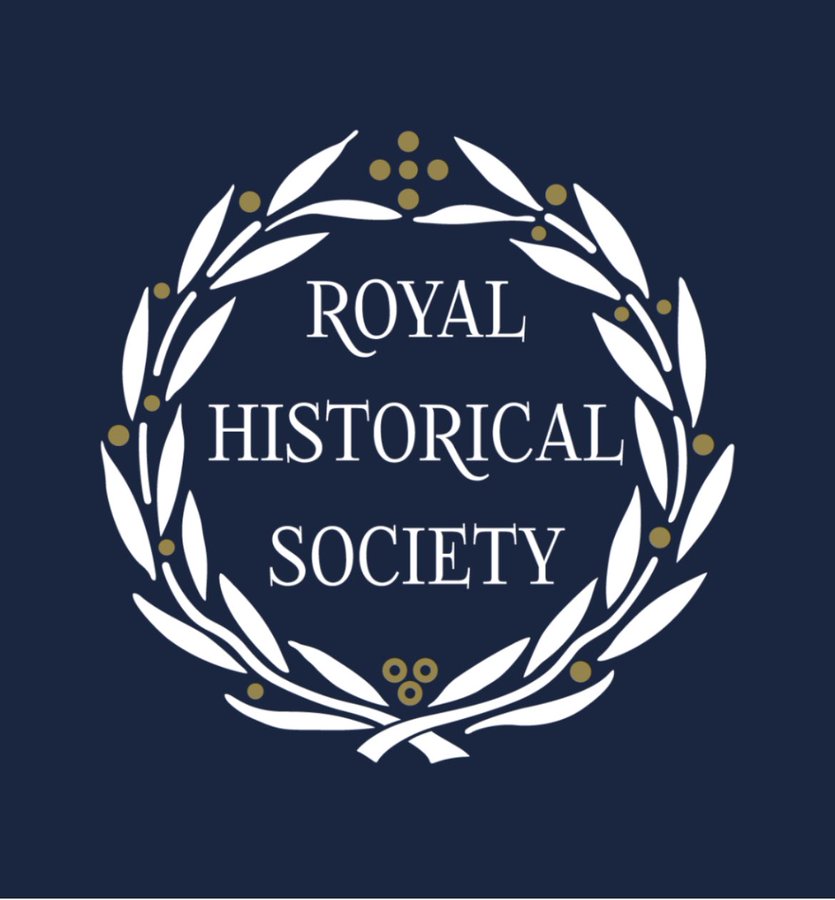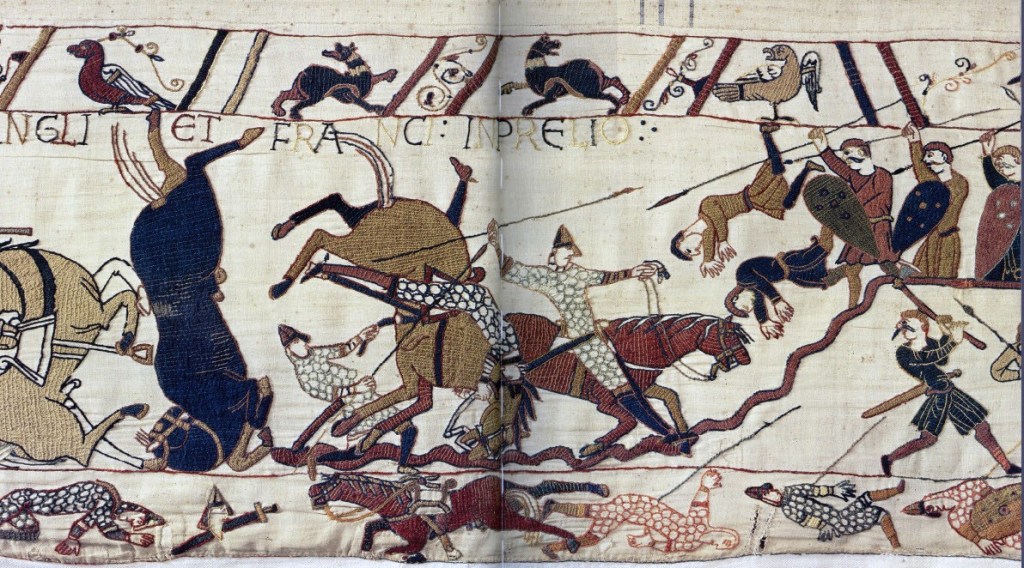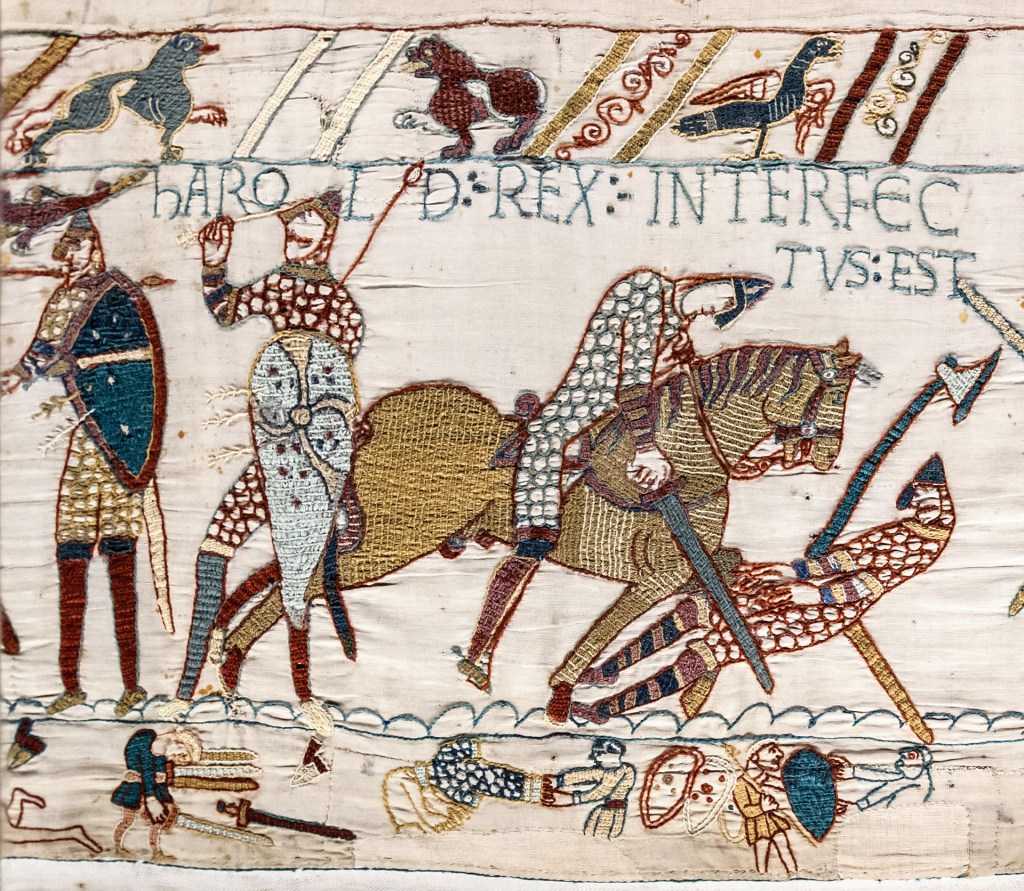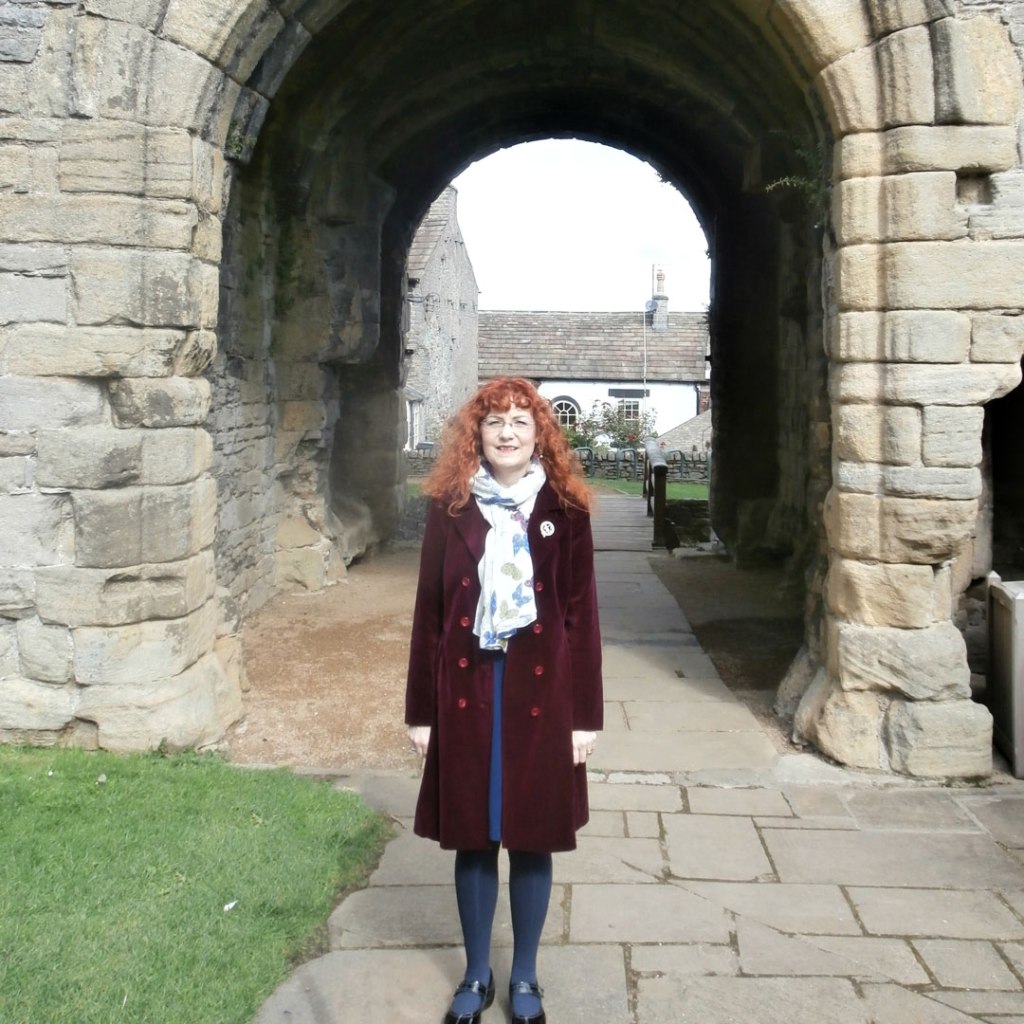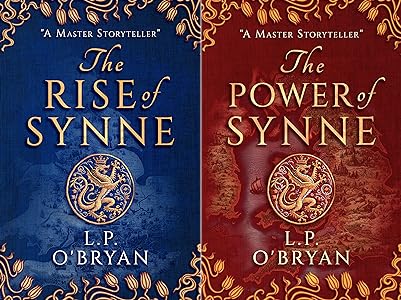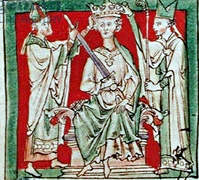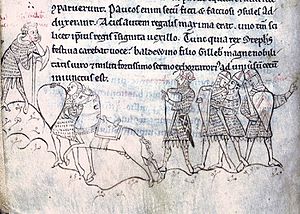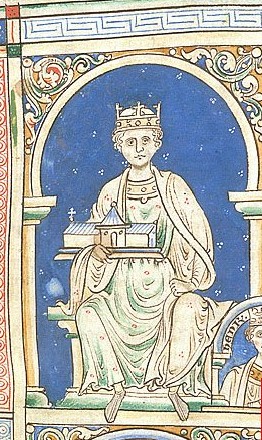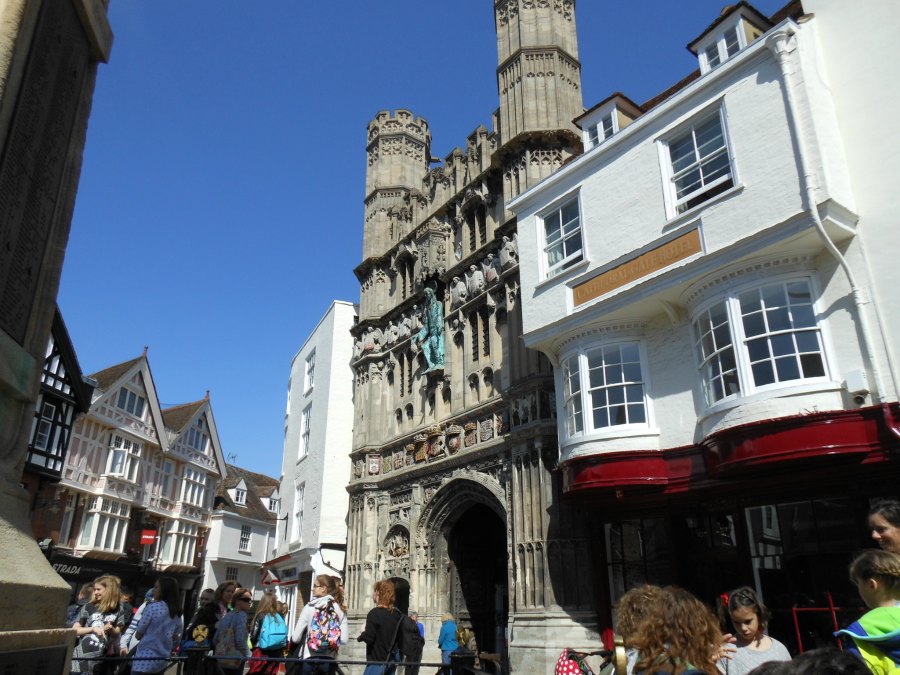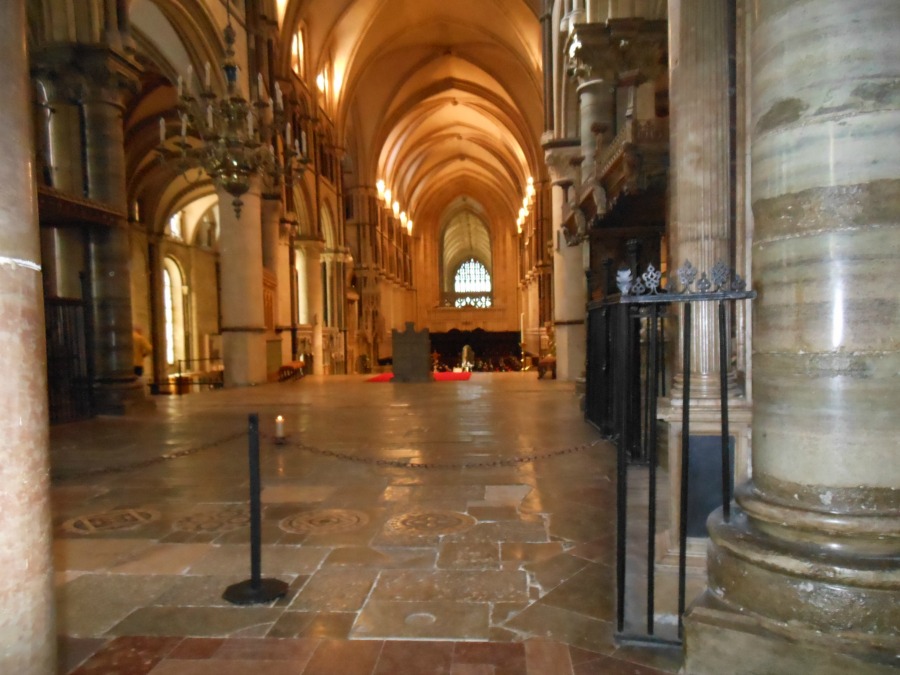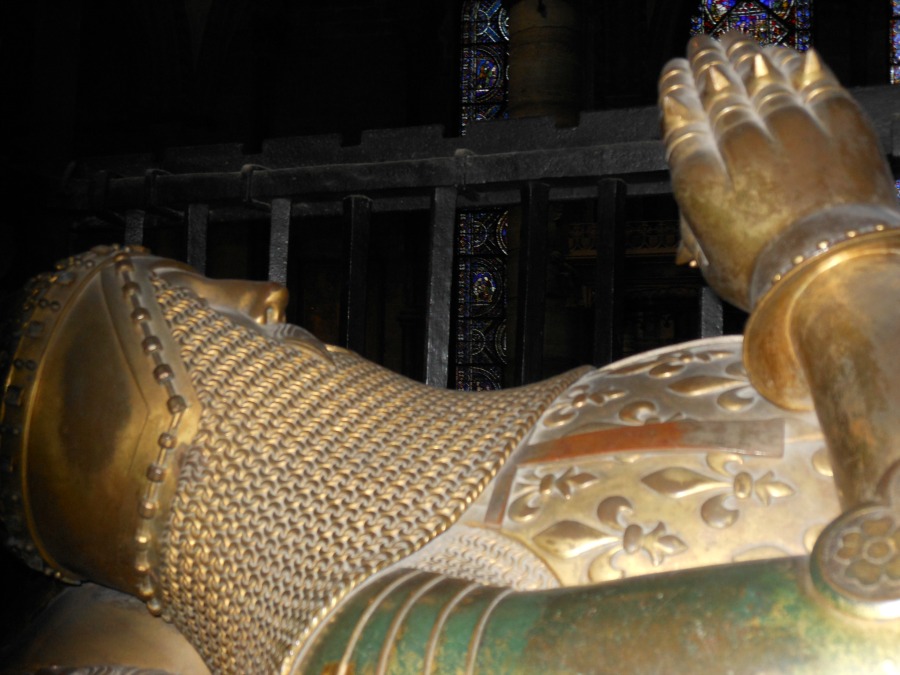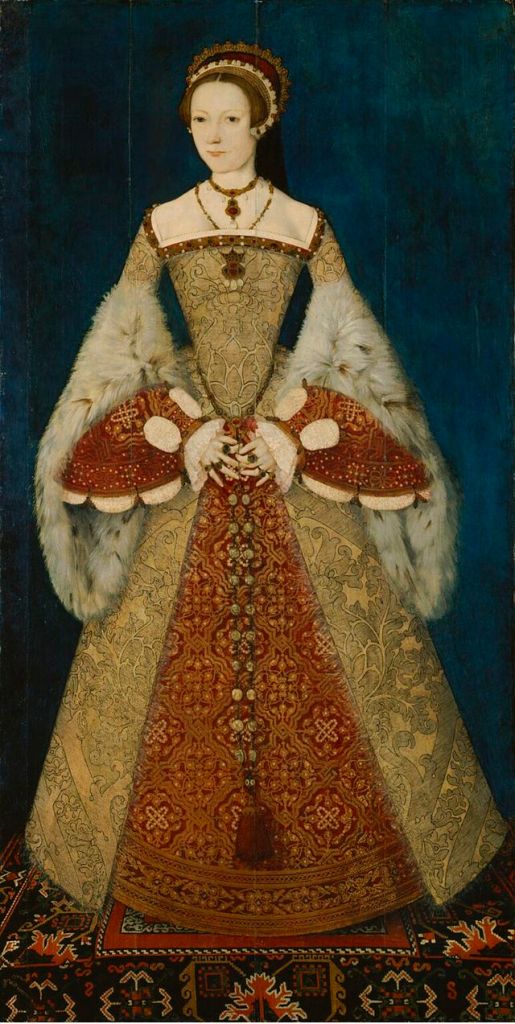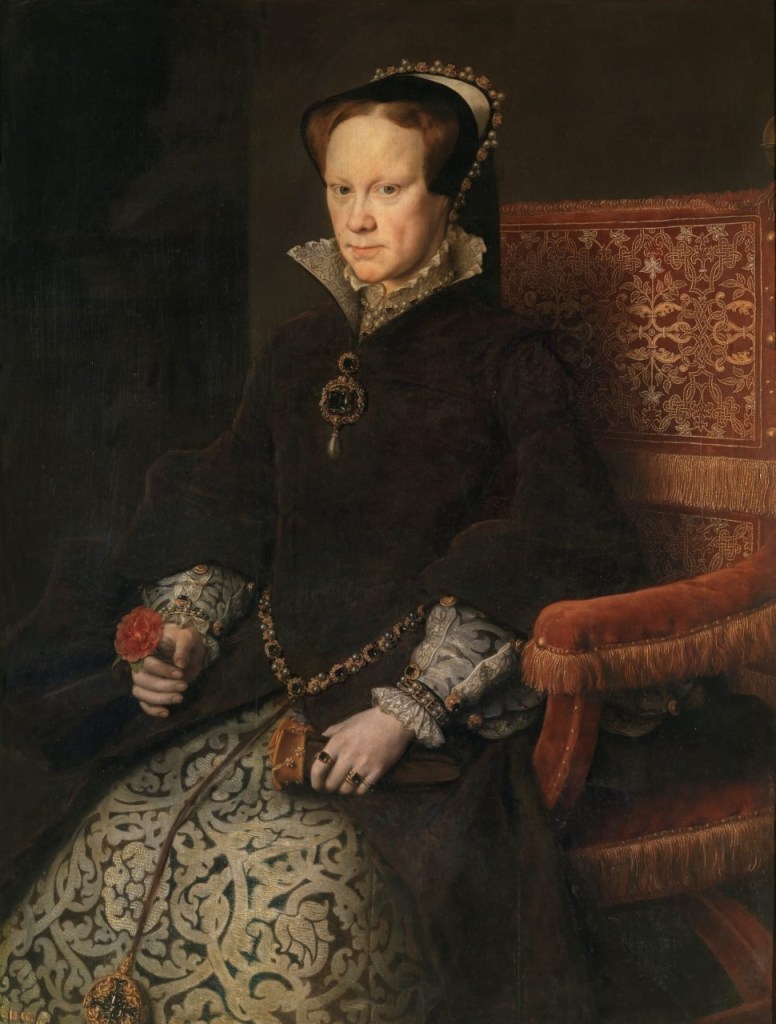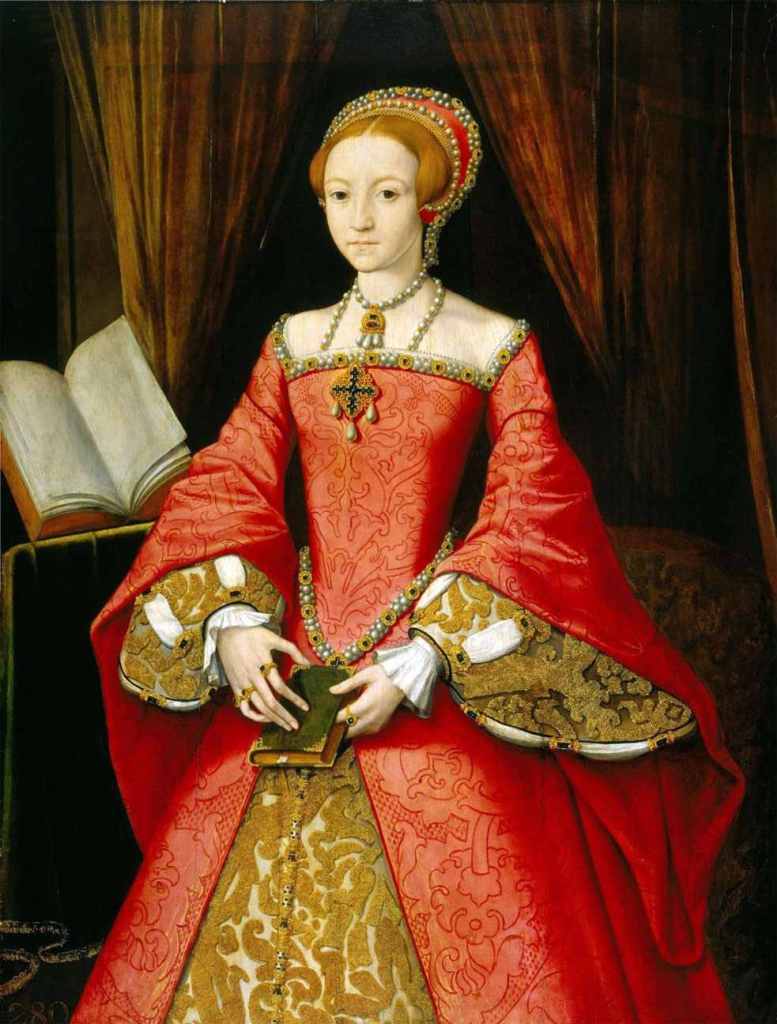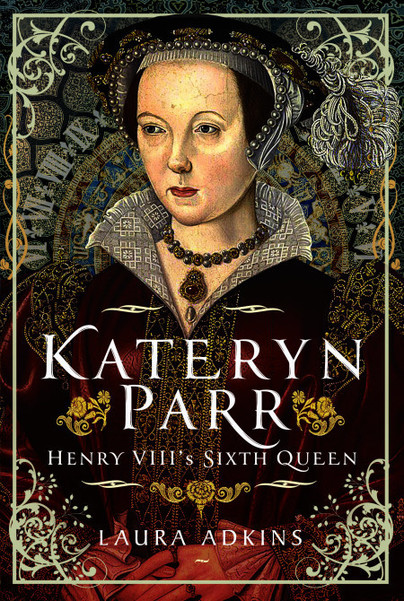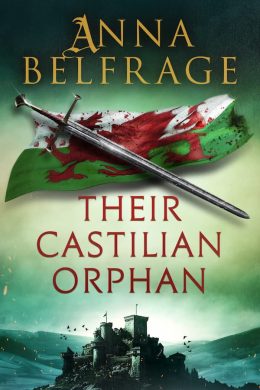Today, it is a pleasure to welcome author Katerina Dunne to History…the Interesting Bits. With her fabulous novel, Lord of the Eyrie, Katerina introduced me to the fascinating history of medieval Hungary, something a knew very little about. And I wanted to know more. Katerina has just released a sequel, Return to the Eyrie and has joined me to give us a little historical background to her stories.
Medieval Hungary by Katerina Dunne
The history of medieval Hungary is fascinating, yet few in the English-speaking world know much about it. From groups of nomadic people raiding across Europe in the 9th – 10th century, the Hungarian conquerors settled in the Carpathian basin, converted to Christianity and, together with the peoples they found already living there, created a powerful multi-ethnic and multi-lingual kingdom, which at its peak stretched from Southern Poland to the Adriatic Sea and from lower Austria to Central Romania as the below map of 15th century Europe demonstrates:
My two historical fiction novels, Lord of the Eyrie (released in February 2022) and Return to the Eyrie (released in April 2024) make up a family saga that spans forty years (1440 to 1480) and two generations. They are set mostly in Transylvania (a province of the medieval Kingdom of Hungary) The noble family is fictional, but I have presented them as branches of powerful baronial clans from Transylvania and Eastern Hungary, so they interact with real historical figures and participate in real historical events.
The 15th century was a turbulent time for the Kingdom of Hungary due to internal conflict as well as the expansionist efforts of the Ottoman Empire towards the west and north. After the Ottoman conquest of Serbia and Bosnia, and the submission of Wallachia to the Sultan as a vassal state, Hungary became the last frontier holding back the Ottoman advance towards Central Europe.
The years between 1440 and 1456 were dominated by the formidable personality of János Hunyadi, a lesser nobleman with obscure origins (likely Wallachian or possibly Cuman), whose military successes against the Ottomans elevated him to the ranks of the most powerful barons and earned him the title of Voivode (governor) of Transylvania and later Captain General and Regent of the Kingdom. At the peak of his power, Hunyadi was the richest landowner in the Kingdom of Hungary, holding about 2 million acres of land spread over 5 modern-day countries (Hungary, Romania, Serbia, Slovakia and Ukraine) He even loaned money to the king at times.
Although Hunyadi lost two major pitched battles against the Ottomans (the battle of Varna in 1444 and the battle of Kosovo in 1448), he achieved several victories against them in various campaigns and sieges. His last and biggest triumph was at the siege of Belgrade in July 1456, when the united forces of the city’s Serbian defenders, Hunyadi’s Transylvanian and mercenary army and a motley crowd of crusaders from lesser nobility, burghers, students, clergy and peasants defeated the mighty Sultan Mehmed the Second, the conqueror of Contstantinople. Hunyadi died in August 1456 of the plague which had spread in Belgrade in the aftermath of the siege.
As it often happens, when a powerful leader dies, chaos ensues among those who strive to take advantage. Hunyadi’s eldest son, László, inherited his father’s vast estates and titles. However, Hunyadi’s old rival, Count Ulrich of Cilli (modern-day Celje in Slovenia) – who was the Hungarian king’s relative – was not going to let this go. Cilli and László Hunyadi got involved in an incident during the king’s visit to Belgrade (which was under the Hunyadi family’s control) that led to Cilli’s death. Although the king (also called László) forgave the younger Hunyadi, he changed his mind when he returned to his palace in Buda. Under the influence of several powerful barons who opposed the Hunyadi family, the king arrested both Hunyadi’s sons, László and fourteen-year-old Mátyás, in the spring of 1457. While he had László executed, he imprisoned Mátyás and many of their supporters.
Furious about the events, Hunyadi’s widow, Erzsébet Szilágyi and her brother Mihály, started a rebellion in Transylvania which almost brought the kingdom to its knees. King László fled to Vienna but took Mátyás with him. When the king died suddenly at the young age of 17 from an illness, the Bohemian ruler George of Podebrady became Mátyás’ captor.
But the king’s death meant that Hungary was in need of a new ruler. After intense negotiations (which probably included promises, bribes and intimidation), Erzsébet and Mihály Szilágyi won the support of the other barons and declared the absent young Mátyás as the new king in January 1458. The legend has it that the Royal Council deliberated in Buda Castle and made the public announcement while the crowds of lesser nobles stood literally on the river Danube, the waters of which had frozen solid.
Following negotiations and a large ransom of 60,000 gold florins, Podebrady released Mátyás to his family, and the teenager was finally enthroned in February 1458. He could not be crowned though because the Hungarian Holy Crown was in the hands of the Holy Roman Emperor, Frederick III. How the crown had ended up there is another story—one of the most fascinating episodes in late medieval Hungarian history— which deserves a separate post. It took another four years and the astronomical sum of 80,000 gold florins to recover the crown. Mátyás was finally crowned with all the appropriate ceremony on 29 March 1464.
He became known as Mátyás Corvinus (nicknamed The Raven King because of the Hunyadi coat of arms, which depicted a raven with a golden ring in its beak) One of the most important rulers in 15th century Europe, he brought the Italian Renaissance and Humanism to Hungary, upgraded the royal palance in Buda, established the famous Corvina Library and was the patron of many scholars and artists. Due to the fact that he was a member of the nobility rather than of royal blood, he faced strong opposition both from inside Hungary and from abroad (Holy Roman Empire, Bohemia and Poland) and he had to fight several wars to secure his grip on the throne. He kept a defensive stance towards the Ottomans, with relative success, and competed with them in his efforts to influence politics in neighbouring Wallachia, Moldavia and Bosnia. Mátyás is well-known for keeping Prince Vlad III of Wallachia (Vlad the Impaler) imprisoned for several years before finally releasing him in 1475 in order to place him on the Wallachian throne as an ally.
Mátyás conquered Vienna in 1485 and was negotiating his possible future designation as Holy Roman Emperor when he died in April 1490.
He has since become the subject of many legends not only in Hungary, but in several neighbouring Central European countries.
About the books:
János Hunyadi appears as a secondary character in my first book, Lord of the Eyrie, while King Mátyás plays a small but pivotal role in the sequel, Return to the Eyrie.
Even though these are parts of a two-volume family saga, each book can be read as a standalone.
Both novels are available in ebook and paperback format on Amazon:
To Buy:
Lord of the Eyrie is available from Amazon in the UK and the US.
Return to the Eyrie is now available in the UK and the US.
About the Author:
Katerina Dunne is the pen-name of Katerina Vavoulidou. Originally from Athens, Greece, Katerina has been living in Ireland since 1999. She has a degree in English Language and Literature from the University of Athens, an MA in Film Studies from University College Dublin and an MPhil in Medieval History from Trinity College Dublin.
Katerina is passionate about history, especially medieval history, and her main area of interest is 13th to 15th century Hungary. Although the main characters of her stories are fictional, Katerina uses real events and personalities as part of her narrative in order to bring to life the fascinating history of the medieval Kingdom of Hungary, a location and time period not so well-known to English-speaking readers.
You can contact Katerina by email: through her FB page: and on Goodreads.
*
My Books:
Signed, dedicated copies of all my books are available through my online bookshop.
Out Now! Women of the Anarchy
Two cousins. On the one side is Empress Matilda, or Maud. The sole surviving legitimate child of Henry I, she is fighting for her birthright and that of her children. On the other side is her cousin, Queen Matilda, supporting her husband, King Stephen, and fighting to see her own son inherit the English crown. Women of the Anarchy demonstrates how these women, unable to wield a sword, were prime movers in this time of conflict and lawlessness. It show how their strengths, weaknesses, and personal ambitions swung the fortunes of war one way – and then the other.
Available from Bookshop.org, Amberley Publishing and Amazon UK.
Coming on 15 June 2024: Heroines of the Tudor World
Heroines of the Tudor World tells the stories of the most remarkable women from European history in the time of the Tudor dynasty, 1485-1603. These are the women who ruled, the women who founded dynasties, the women who fought for religious freedom, their families and love. These are the women who made a difference, who influenced countries, kings and the Reformation. In the era dominated by the Renaissance and Reformation, Heroines of the Tudor World examines the threats and challenges faced by the women of the era, and how they overcame them. From writers to regents, from nuns to queens, Heroines of the Tudor World shines the spotlight on the women helped to shape Early Modern Europe.
Heroines of the Tudor World is now available for pre-order from Amberley Publishing and Amazon UK.
Also by Sharon Bennett Connolly:
King John’s Right-Hand Lady: The Story of Nicholaa de la Haye is the story of a truly remarkable lady, the hereditary constable of Lincoln Castle and the first woman in England to be appointed sheriff in her own right. It is is available from King John’s Right-Hand Lady: The Story of Nicholaa de la Haye is the story of a truly remarkable lady, the hereditary constable of Lincoln Castle and the first woman in England to be appointed sheriff in her own right. Available from all good bookshops or direct from Pen & Sword Books, bookshop.org and Amazon. Defenders of the Norman Crown: The Rise and Fall of the Warenne Earls of Surrey tells the fascinating story of the Warenne dynasty, from its origins in Normandy, through the Conquest, Magna Carta, the wars and marriages that led to its ultimate demise in the reign of Edward III. Available from Pen & Sword Books, Amazon in the UK and US, and Bookshop.org.
Ladies of Magna Carta: Women of Influence in Thirteenth Century England looks into the relationships of the various noble families of the 13th century, and how they were affected by the Barons’ Wars, Magna Carta and its aftermath; the bonds that were formed and those that were broken. It is now available in paperback and hardback from Pen & Sword, Amazon, and Bookshop.org. Heroines of the Medieval World tells the stories of some of the most remarkable women from Medieval history, from Eleanor of Aquitaine to Julian of Norwich. Available now from Amberley Publishing and Amazon, and Bookshop.org. Silk and the Sword: The Women of the Norman Conquest traces the fortunes of the women who had a significant role to play in the momentous events of 1066. Available now from Amazon, Amberley Publishing, and Bookshop.org.
Alternate Endings: An anthology of historical fiction short stories including Long Live the King… which is my take what might have happened had King John not died in October 1216. Available in paperback and kindle from Amazon.
Podcast:
Have a listen to the A Slice of Medieval podcast, which I co-host with Historical fiction novelist Derek Birks. Derek and I welcome guests, such as Bernard Cornwell and Elizabeth Chadwick, and discuss a wide range of topics in medieval history, from significant events to the personalities involved.
*
Don’t forget! Signed and dedicated copies of all my books are available through my online bookshop.
For forthcoming online and in-person talks, please check out my Events Page.
You can be the first to read new articles by clicking the ‘Follow’ button, liking our Facebook page or joining me on Twitter and Instagram.
*
©2024 Katerina Dunne and Sharon Bennett Connolly FRHistS.
